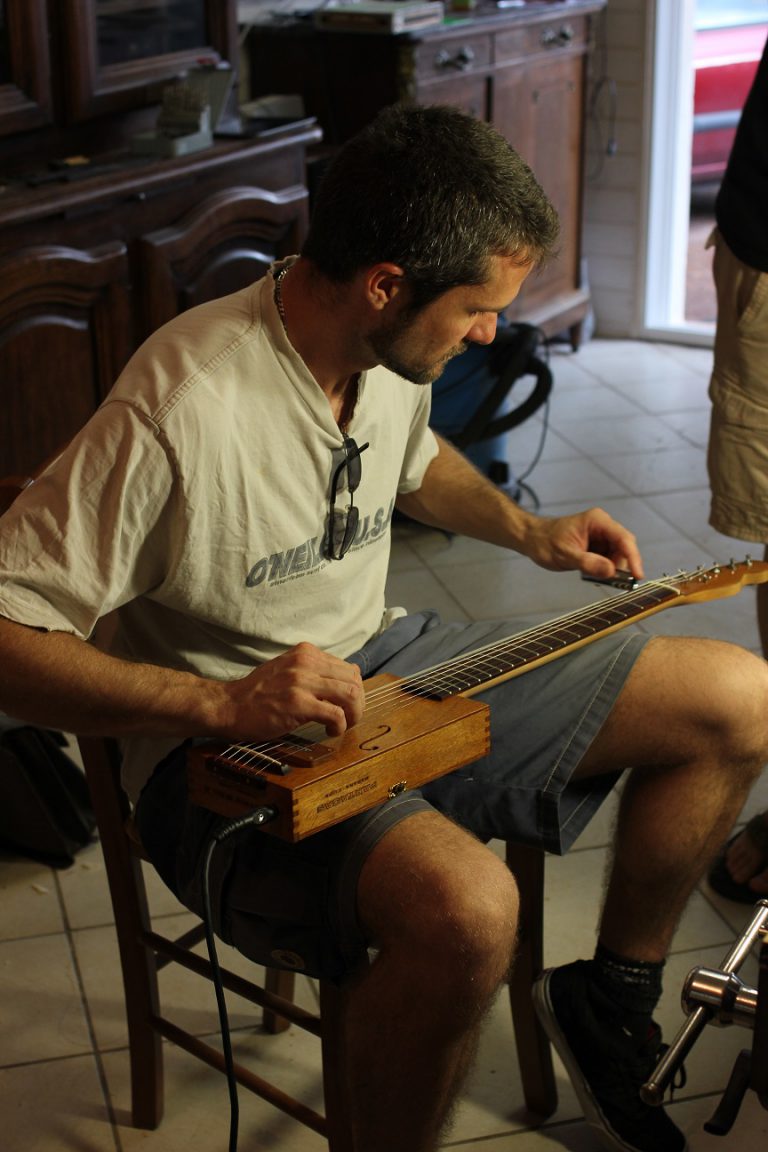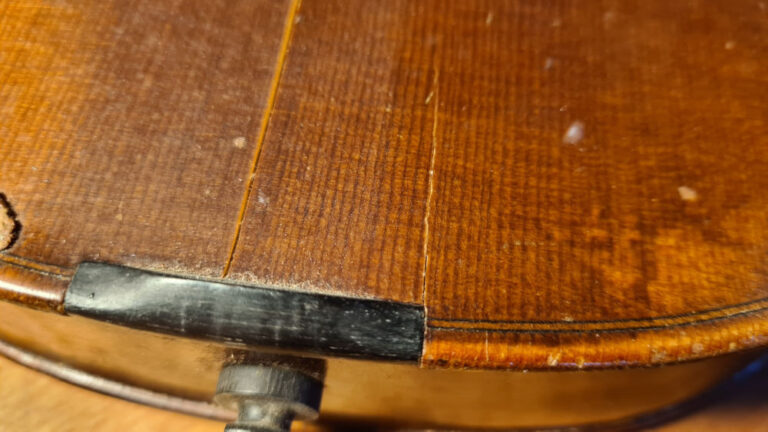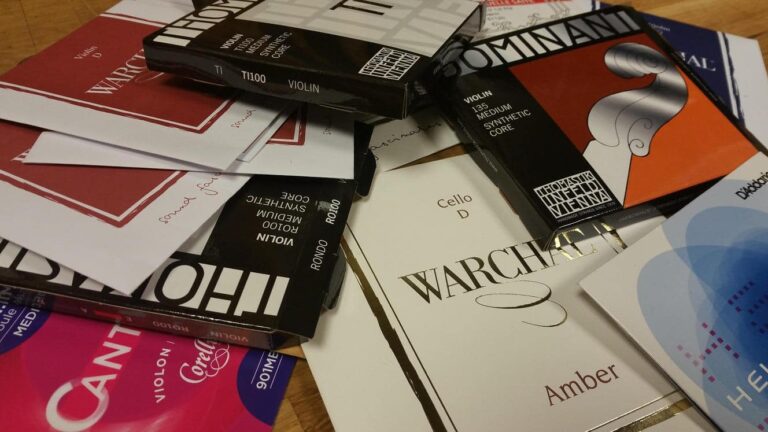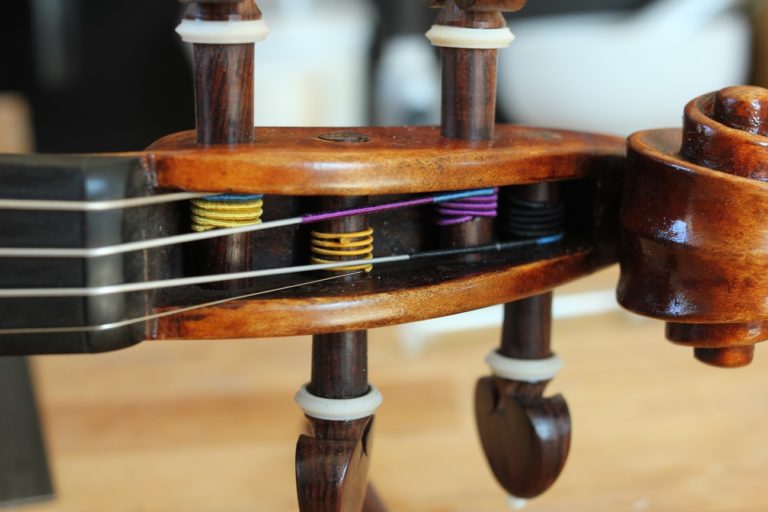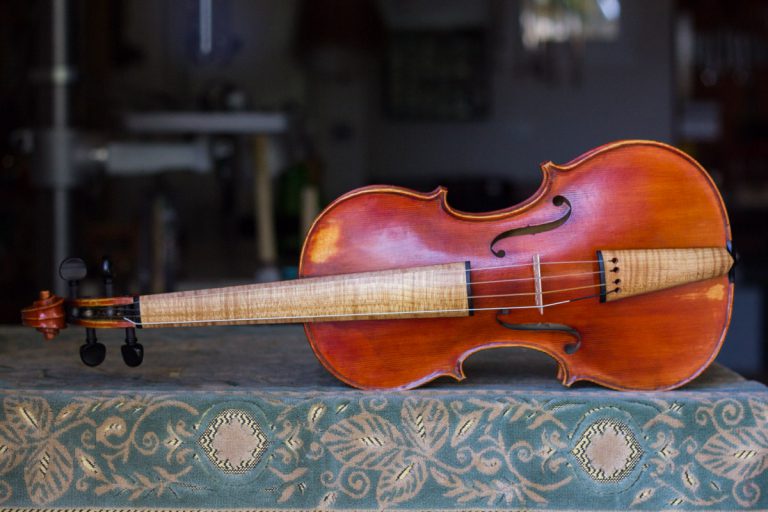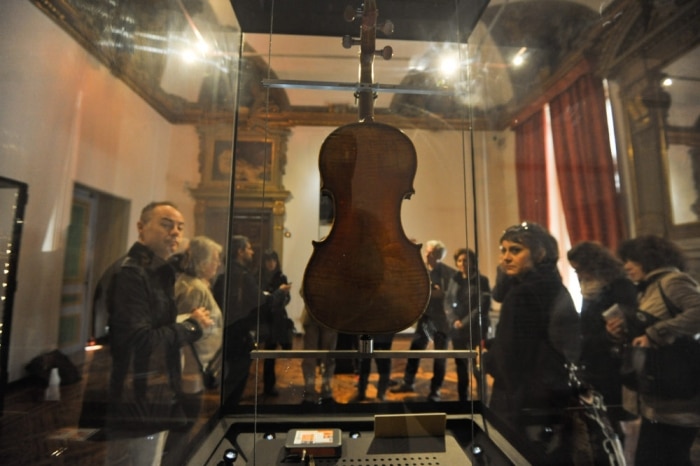Warchal is a Slovakian company that manufactures strings for violins, violas and cellos. It is named after its two founders and violinists: Bohdan Warchal father and son. Their young company stands out not only for its innovative ideas and commitment, but also for the quality of its strings, which I invite you to discover in this article!
About Warchal strings
Warchal strings are first and foremost the combined experience of two generations of professional musicians. Nevertheless, these high-quality strings are also based on state-of-the-art technology. They are designed using their own materials and formulas. Warchal has also introduced innovative string ideas such as their recycling program and helical strings. They are constantly investing in the research and development of new ideas and products of exceptional quality with their own identity.
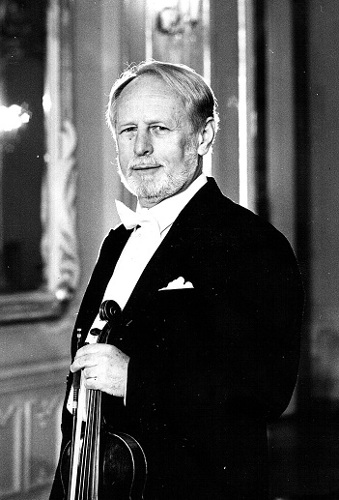
Bohdan Warchal, the father
Bohdan Warchal Sr. is a virtuoso violinist born in 1930, who has played and taught at several universities in Central Europe. He also founded theSlovak Chamber Orchestra in 1960. Under his direction, the orchestra gained an international reputation. In 40 years of conducting, they gave just under 2,500 concerts worldwide. They also recorded over 150 albums and discs.
[pullquote align="center "]
In 1998, an asteroid was even named after the violinist...
[/pullquote]
Bohdan Warchal, the son
Bohdan Warchal Jr. graduated from the Academy of Arts in Prague, Czech Republic. Since 1989, he has been a member, then soloist, of theSlovak Chamber Orchestra. He has also been active as a teacher at the Conservatory and Academy of Music in Bratislava, Slovakia. He is also the author of books on violin pedagogy:
- The Natural Way of playing theViolin
- Master yourStageFright
As a violinist, he has always been in search of the ideal instrument, the best bow or the perfect strings. That's why he's always been captivated by the world of sound and musical instrument production. From a simple hobby, he quickly moved on to building a team of experts to start finding answers. That's how, in 2003, he founded the Warchal company, whose ambition is to produce the highest quality strings. Today, he coordinates research in the company's acoustic laboratory.
The objectives of the Warchal family
Although after thousands of hours of work and development, the Warchal family and their collaborators are only at the beginning. Despite the keen interest they've aroused, their goal doesn't stop there. In the future, their plan is to revolutionize rope as we know it, using unconventional materials for example. They also hope to offer their services to musicians whose needs cannot be met by mass-produced strings. In fact, the sound characteristics of each instrument are as different as the musician's perception of sound: in this case, why not produce customized strings?
In the not-too-distant future, why not offer all their customers the following services?
- After analyzing a loaned instrument over a period of a few days
- The laboratory would then use the data to develop specially adapted strings for the violin, viola or cello.
- The musician's choices could also be taken into account to give life to his own conception of sound.
- This string could then be reproduced with the same data or altered to follow the musician's evolving tastes.
Of course, this process may not need to be set in motion, as Warchal is already on the hunt for the perfect string! They're fascinated by the sound...
Even old strings have value at Warchal
[pullquote align="right"]
We believe it is our duty to build the future of our planet responsibly.
Warchal
[/pullquote]
Since 2012, Warchal has been the first rope manufacturer to offer its own recycling program for used ropes. These are mostly produced on a synthetic core and all kinds of different metals. These include aluminum, stainless steel, brass, tungsten, pure silver and special alloys. The prices of these materials are also high, due to the high demand from today's industry. What's more, reserves are not inexhaustible and will one day be completely depleted.
Some materials cannot be replaced, as in the case of silver used in the production of top-of-the-range strings. Unfortunately, every year hundreds of kilos of silver end up in landfills or incinerators, because nobody thought they could be recycled. What's more, when cords are no longer usable, who doesn't simply dispose of them in a garbage can? That's why it's so important for us, as musicians, to contribute to recycling so that we can continue to use our superb strings... What's more, recycling will help prevent the constant rise in materials, and therefore strings, in the future.
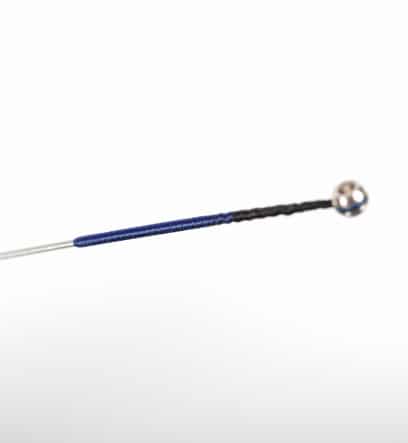
Committed to their initiative
For Warchal, this is simply no easy task. The ropes weigh only a few grams but are a tangle of many materials. In fact, the hard part is really separating each material and accumulating them in acceptable volume and purity so that they can be recycled. Nevertheless, they're sticking to their idea.
That's why they're committed to buying back their string sets, even if it's not really profitable.
How to get involved in the recycling program
By taking part in the recycling program, you're not only helping to preserve our planet's resources. You'll also earn money!
That's why you can send your strings directly to my workshop or to Warchal. Although, considering the cost of shipping, it's probably not cost-effective to send your set of strings individually. You can accumulate them and send them as soon as it becomes more profitable. There is no expiration date for this offer, and it will be valid indefinitely, no matter how old your strings are.
Alternatively, I can collect your strings and offer you a credit on your next orders in my store. Here is a list of current rates, which are exactly the same as those offered by Warchal:
|
Violin |
Alto |
Cello |
|---|---|---|
| 2.20 € for the complete set | 2.50 for the complete set | 7.40 € for the complete set |
| Soil € 1.10 | Do € 1.20 | Do € 3.20 |
| Re €0.80 | Soil € 0.90 | Soil € 1.60 |
| The €0.20 | Re €0.20 | Ré € 1.60 |
| Mi € 0.10 | The €0.20 | The €1.00 |
Find strings in my store
I offer and recommend Warchal products for your violins, violas and cellos. Whatever the character of your instrument, there's a set or combination that's just right for you. If you need further advice or clarification, you can also contact me directly.
[carousel type=cat-products orderby=date columns=4 items=16 speed=9000 scroll=1 cat=cordes-warchal]
Warchal answers your questions
In the following lines, Warchal answers some of the most frequently asked questions about strings. But we'll also be learning more about their history, while gleaning a few insights into what these experts think about how to improve the timbre of your instrument.
Chanterelle with ball or loop?
[pullquote align="right"]
Loop E's are reputed to be less durable than the ball version, because breakage is quite common. However, this usually only happens when an unsuitable adjuster is used.
[/pullquote]
Around 80% of the E strings for violins sold by Warchal are the ball versions. More often than not, this is a purely aesthetic choice on the part of the musician. But in truth, there is also an acoustic difference, which is explained below:
The acoustic difference is actually caused by variations in string length between the bridge and the tailpiece or adjuster. Indeed, depending on the type of attachment to the tailpiece or adjuster, this length can vary considerably. Generally speaking, it is shorter in the case of traditional fine adjusters for ball strings. This is why, when using a looped string, the length between bridge and tailpiece is greater. The result is a lower frequency of vibration in this section, producing a warmer, better-projected sound for the instrument as a whole.
This difference is less obvious with a tailpiece whose adjusters are integrated, although in this case you'll still need to check that it's not too heavy.
What Warchal recommends
In any case, Warchal recommends using a looped E string with an English-style adjuster for best results. In the case of a ball E string, it's better to use a tailpiece with an integrated adjuster, but this should be of good quality and as light as possible.
Although the difference between the two types of rope is not immense. It is perceptible and measurable with the right equipment. That's why, even though the difference is minimal, if combined with other small elements of sound(such as the use of Kevlar tailpieces), you'll be able to see clear improvements in sound.
Why are your strings called Nefrit, Ametyst, Karneol, Amber or Brilliant?
The idea of producing strings came step by step. Initially, there was this mutual interest between father and son in lutherie and sound development. In the late '90s, Bohdan Warchal Jr.'s hobby focused on string production, as he was not always satisfied with the strings available on the market at the time. After a few years of trial and error, he was able to produce strings for himself and his friends. So, in 2003, he decided to set up a small rope production company in Slovakia. At the time, they had two models, one for professionals and one for students. But they were going to need names to identify them.
The idea was to find a name that would characterize their objective: unique quality. That's why the name "Gemstones" was an obvious choice. At the time, the strings were not intended to be sold beyond the borders of Slovakia, which is why their first series bear names in their native language:
- Ametyst
- Karneol
- Nefrit
By 2006, the strings were already being sold worldwide. That's why the new strings, developed for their most demanding customers, were directly named in English:
- Brilliant
- Amber
Why do you only offer your strings in single tension?
Warchal decided to produce their strings with a single tension only, to simplify stock management for their dealers. Luthiers in particular need to be able to satisfy the demands of all kinds of customers and instruments. This means stocking a large number of different brands and types of strings. This increases the likelihood of unsold stock for long periods. That's why Warchal has gone to great lengths to determine the ideal tension for each of their strings. In fact, they confidently state that their tension fits virtually every instrument.
Of course, it's impossible to produce a perfect string for every instrument. But it's really more a question of string design than string tension. In other words, when a certain string set doesn't work on a violin, viola or cello, it doesn't mean that a change of tension will solve the problem. When it comes to tension, Warchal strings don't really differ from all the other high-quality synthetic strings on the market. Nevertheless, there are a few variations. In fact, defining the ideal tension is one of their objectives.
How does string tension change the sound?
Generally speaking, the greater the tension, the greater the volume. Unfortunately, high string tension also has a number of disadvantages. Firstly, the instrument's playability and response are reduced. This is particularly noticeable in very light dynamics and in high positions. What's more, as the tension increases, the harmonic profusion tends to diminish, making the sound seem more powerful, but not projecting as well. Conversely, too little tension will result in a thin sound that lacks body considerably.
Of course, the strength and response of the sound are largely influenced by the string's internal structure. But also by the materials of which it is made. While on the one hand, Warchal strings are generally less taut than other manufacturers' strings whenever possible, the tension of their chanterelles is a little higher. They adapt to the complexity and smoothness of the soprano register.
Finally, E strings with a high tension tend to whistle on some instruments. To completely eliminate this problem, you can use Ametyst or Amber chanterelles, which are specially designed to totally avoid these inconveniences.
Why this choice of packaging and, above all, this strange order in the package?
[pullquote align="right"]
A set of Warchal violin strings still packed weighs 25g.
[/pullquote]
Warchal invests effort in every aspect of their products. Whether it's to improve their performance, or to save their partners and customers money. Initially, they thought of supplying each string in a luxurious cardboard box. This would have contained both the ropes and essential information. However, this would have weighed quite a bit, which would have added considerably to shipping costs. That's why, in the end, each string is wrapped in paper. And each set in a simple plastic pouch.
For violins, Warchal usually produces two versions of D strings, so this string is placed first. This makes it easy for the seller and the customer to determine whether the string is silver or hydronalium. Similarly, the E string is placed last to clearly show whether it's a ball or loop version. This clear information makes it easy to identify what you need.
Why does the chanterelle sometimes whistle?
Every violinist in the world has been confronted with the whistling of the E string. Beginners usually amplify this undesirable effect in two ways. Firstly, the whistling occurs when the bow is too far from the bridge during the A to E transition. Secondly, the violin player sometimes lightly touches the string with his left index finger(with the edge of the finger, just above the saddle) at the moment of transition on the E. However, whistling continues to challenge many professionals. Some instruments are simply very prone to this kind of inconvenience: even the best violins.
When Warchal realized that certain chanterelles had a particular resistance to this phenomenon. It became clear that certain strings would not be suitable for all instruments. Indeed, on the Karneol or Brilliant models, it's this high tension that makes for a rich, colorful sound. This characteristic will tend to encourage whistling on instruments that are already sensitive to this problem. This is why the Amber spiral string has been developed and is recommended for these violins.
How do I care for my strings? Do they need cleaning?
Above all, Warchal strings require no special care. They can, however, be maintained to ensure a good bond with the bow. Strings can be cleaned when a new layer of rosin is applied to the bow. It is often necessary to add a certain amount of rosin, which tends to accumulate on the strings. The easiest way to clean them is to use alcohol. However, it is very important to be careful not to touch the instrument's varnish. This could spell disaster, as the varnish will literally melt away.
In most cases, it's not even necessary to use alcohol - in fact, it's not recommended. A thin layer of rosin is easily removed with any cloth. If this is more difficult, you can also use a piece of plastic such as the edge of a credit card. Metal objects should never be used to scrape off rosin.
If you change your strings yourself, don't forget to check the width of the saddle passages. The saddle should perfectly match the diameter of your strings. You can also apply the graphite of a pencil in these to help the strings slide. For this, I recommend a bold 8B or 9B model.
[blog_posts items="1″ orderby="date " ids="8751″]
How often should Warchal strings be replaced?
[pullquote align="right"]
It's well known that the durability of synthetic strings is inferior to that of metal strings. Nevertheless, they offer many more options in terms of modulation and expressiveness of sound. That's why they're so popular.
[/pullquote]
However, the best time to change a string or a complete set depends on a number of factors. For example:
- How many hours a day and at what intensity the strings are played
- The acidity of the player's perspiration
- The musician's expectations regarding the sound of his instrument
On the other hand, there can be at least three reasons why strings absolutely must be changed:
- The winding has broken(this happens very frequently on the La)
- The strings are completely wrong and can no longer be tuned
- They have completely lost their sound
More concretely
When worn, strings gradually lose their tonal quality. This is why it can be relatively difficult to determine when exactly to change them. We generally speak of 150 hours of playing, which for a professional musician means around 6 weeks. Some soloists replace theirs even more frequently. Nevertheless, many concert performers and teachers admit to playing Warchal strings for much longer periods.
Personally, however, I'd recommend changing them as soon as they start to cause intonation problems. Generally, they will then start to cause tuning problems. Even if in some cases it is possible to change a string that has been used more than the others. However, it's better to change the whole set to maintain perfect homogeneity.

